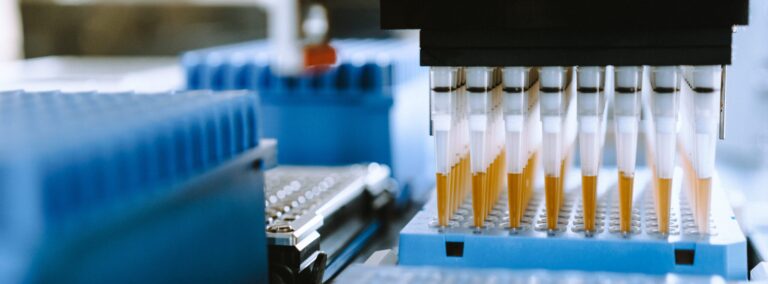
Among the myriad techniques for nucleic acid extraction, magnetic beads stand out as an efficient and reliable tool to implement when automating extraction workflows. Magnetic bead-based extraction relies on the use of paramagnetic particles with coatings capable of specifically binding to nucleic acids. These beads only display magnetic properties when an external magnetic field is introduced, allowing for easy separation without clumping. Traditional methods for DNA and RNA isolation prove themselves to be time-consuming since they are not automation or high throughput friendly. The utilization of magnetic bead-based nucleic acid extraction paves the way for high throughput extraction workflows that produce high-yielding, high-quality DNA and RNA.
This process involves four key steps:
- Lyse – First, cell membranes and nuclear envelopes must be disrupted to release the nucleic acids. Samples are lysed in buffer systems that are tailored specifically to each type of starting material.
- Bind – After lysis, particles consisting of a magnetic core and nucleic acid-binding coating are introduced to the sample in the presence of an appropriate binding buffer. This selectively binds the target nucleic acid to the bead for extraction. A magnetic field is applied using a magnetic separation device to attract the particles and separate them from the lysate.
- Wash – Unbound contaminants, such as proteins, lipids, and other cellular debris, are removed with a series of wash steps. This ensures that only the purified nucleic acids bound to the magnetic particles remain for further processing.
- Elute – The nucleic acids are then eluted from the magnetic beads using a low-salt buffer or water.
The advantages of magnetic bead-based nucleic acid extraction include its high specificity, reproducibility, and the ability to process multiple samples simultaneously. The magnetic separation step simplifies the process and eliminates the need for cumbersome centrifugation steps, making it amenable to automation and high-throughput applications. This method is widely used in molecular biology research, clinical diagnostics, and other fields where high-quality nucleic acid extraction is crucial for downstream applications like PCR, sequencing, or analysis of gene expression.
WP-0045
